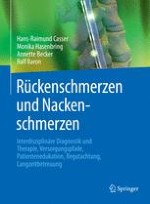Zusammenfassung
In der Therapie von Kreuz- und Nackenschmerzen ist die rasche Wiederherstellung der körperlichen Aktivität im Alltag ein vorrangiges Ziel für den individuell Betroffenen wie für die Gesellschaft. Der Beitrag beleuchtet die Schwierigkeit, ein »normales« Maß an Aktivität zu definieren, da sowohl Inaktivität als auch Formen von Überaktivität mit einem erhöhten Risiko chronischer Schmerzen einhergehen. Basierend auf neurobiologischen Grundlagen sowie auf klinischer Forschung wird aufgezeigt, welche Mechanismen die Beziehung zwischen körperlicher Aktivität und Schmerz vermitteln und welche Rolle Lebenskontexte (u. a. Beruf/Hausarbeit, Freizeit/Sport) auf der einen Seite, individuelle Muster der Schmerzverarbeitung auf der anderen spielen. Die Autoren empfehlen für verschiedene therapeutische Settings (z. B. Physiotherapie, Rehabilitation, Psychotherapie) individualisierte Maßnahmen, die zur Verbesserung der Flexibilität zwischen körperlicher Belastung und Erholung beitragen.











